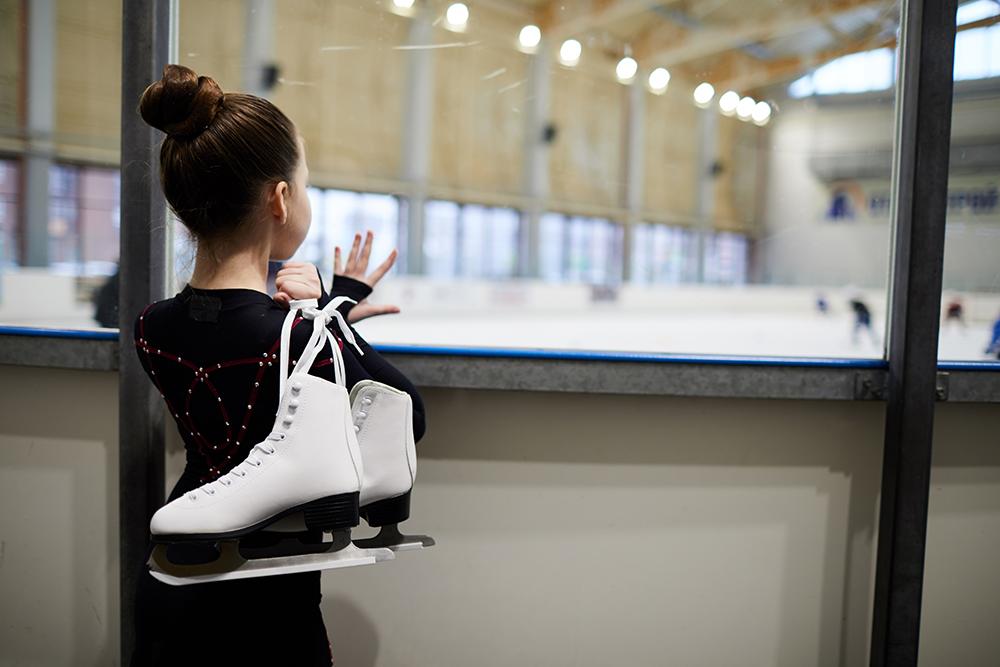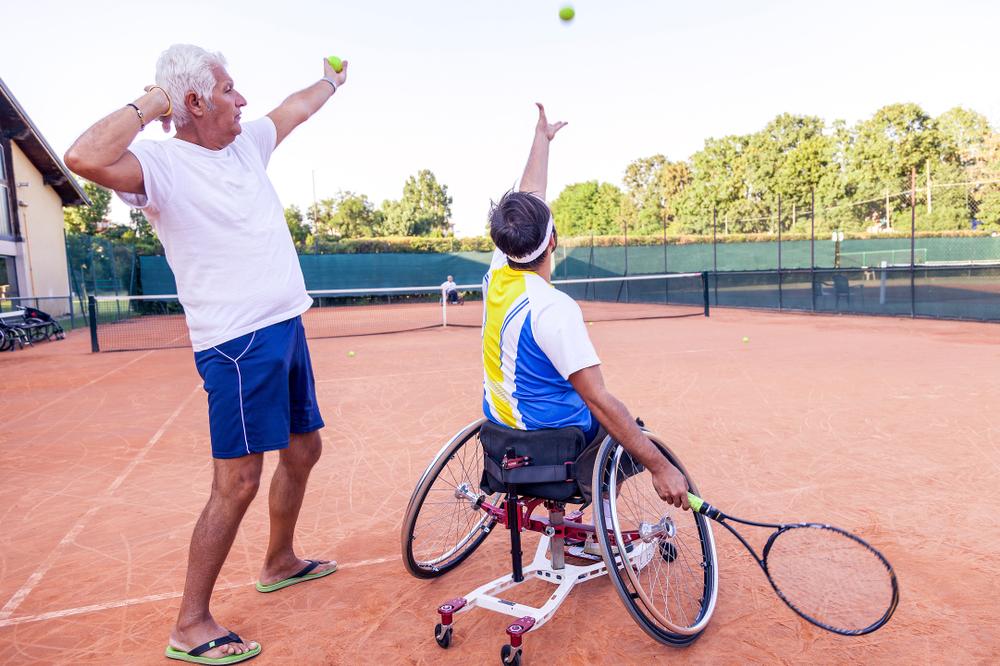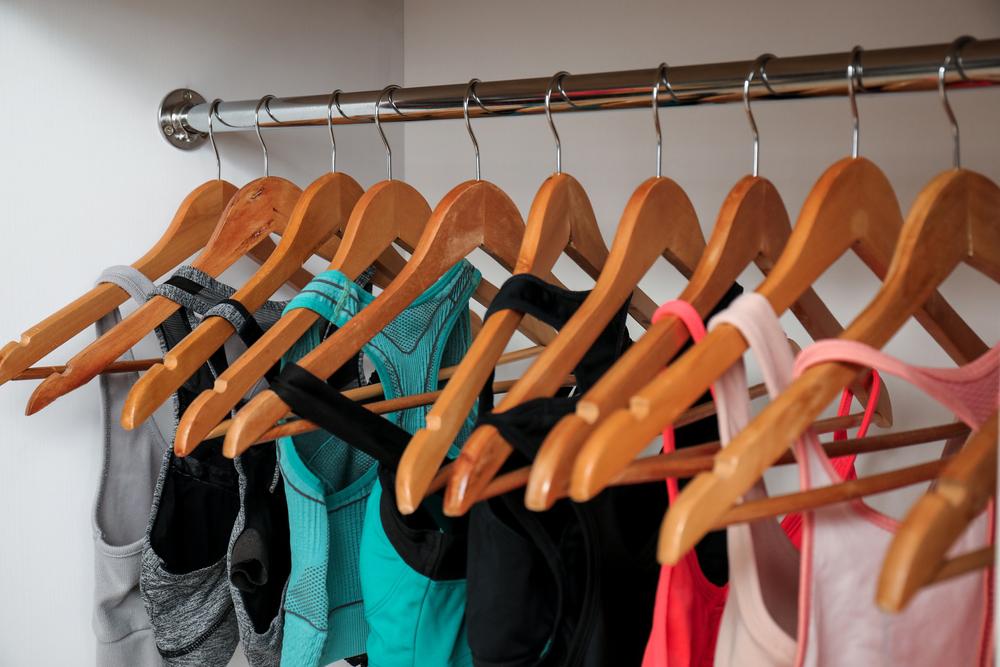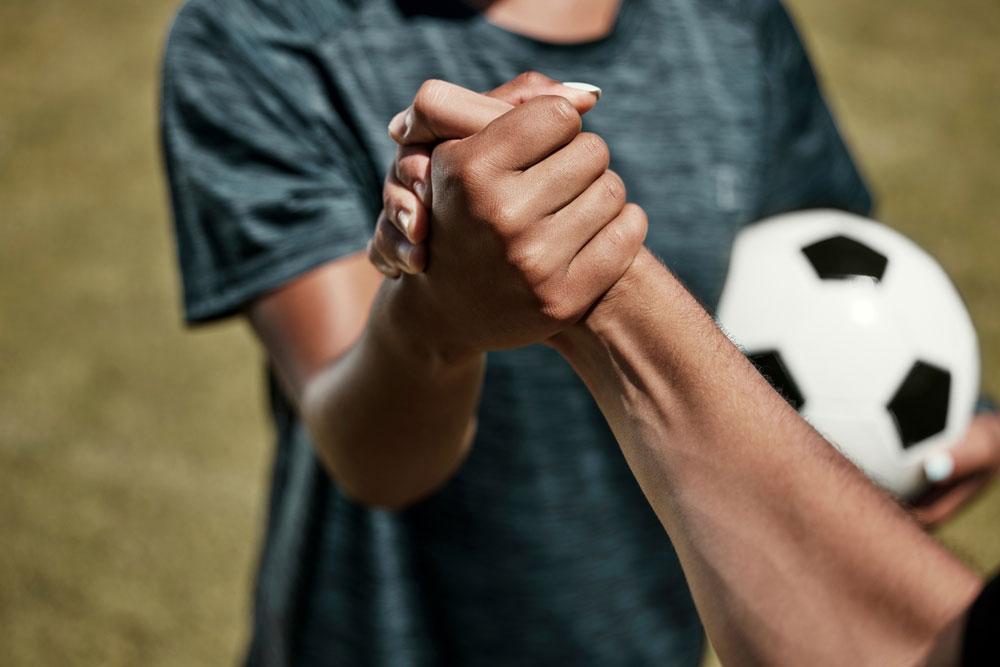 As young athletes return to practice after being away from friends and coaches for months due to COVID-19 lockdowns, athlete anxiety will be natural. Not only are there new safety protocols in place that may seem confusing or intimidating, it’s a big shift emotionally as well.
As young athletes return to practice after being away from friends and coaches for months due to COVID-19 lockdowns, athlete anxiety will be natural. Not only are there new safety protocols in place that may seem confusing or intimidating, it’s a big shift emotionally as well.
Instead of being stressed or anxious about practices being canceled like they were three months ago, athletes are now feeling stress and anxiety around practices coming back. While the situation is similar, the ways that parents can help athletes cope with these feelings will be slightly different and TrueSport Expert Kevin Chapman, PhD, clinical psychologist and founder of The Kentucky Center for Anxiety and Related Disorders, is here to help parents navigate an athlete’s return to play.
Let Them Feel Feelings
First and foremost, it is important to recognize your athlete’s feelings as valid. For months, he’s been told that he cannot play with his friends or go to practice without risking himself and his loved ones, but now, he’s being told to return to play. The shift in messaging was may have been abrupt, as most states are reopening at a brisk pace, which doesn’t leave young athletes with much time to process feelings. “Most athletes I know are excited,” says Chapman. “But being nervous or anxious is completely understandable, and we need to normalize those feelings.” Don’t ignore your athlete’s feelings, discuss them.
Assess Where Anxiety Stems From
Before you can help your athlete figure out how to deal with anxiety around return to play, it’s important to understand what’s causing their feelings. Chapman notes that there are a few primary causes.
- Not being “up to speed.” Even if a coach has been recommending cross-training or hosting virtual practice, your athlete may still feel like they’ve gotten behind.“Every athlete is feeling that way,” says Chapman. “It’s important to remember that everyone on the team has been in the same boat, so it’s unlikely that your athlete is far behind everyone else. But that stress is understandable.”
- Seeing friends for the first time in weeks. While adults are unlikely to feel the stress of seeing friends again, remember that friendships can be more complicated at young ages, especially in pre-teen and teen years. Your athlete may have been out of touch with teammates during this time, so it’s understandable that they might feel some nerves around seeing teammates again.
- Worry about virus. Your athlete has been hearing about the dangers of coronavirus for months now and has learned that staying safe means staying away from people. For younger athletes in particular, it’s entirely possible that they could have developed an unhealthy amount of anxiety around germs and getting sick.
- Absorbing parental anxiety. During the coronavirus crisis, parental stress and anxiety have been heightened, according to the American Psychological Association. “We know there’s a family transmission of anxiety,” says Chapman. He explains that kids are attuned to parental emotions, meaning if you’re anxious about your athlete getting dropped off at practice, they will likely feel the same way.
Work Through Solutions
Once you understand the root of your athlete’s nerves around returning to play, you can work together to find solutions. Chapman has some suggestions for how to help ease the transition.
- Not being “up to speed.” Remind your athlete that everyone on the team is likely having the same feeling and let them think through if there are any steps to take to‘get caught up.’ Are there some extra drills to practice at home this week? Even spending a few minutes helping them practice in the backyard to remind them that they can still kick/toss/throw/catch might make a difference.
- Seeing friends for the first time in weeks. If there’s time ahead of this first return to practice, encourage your athlete to set up a video hangout or group chat with a few teammates. Catching up with a couple friends may help ease the way back into a bigger social scene.
- Worry about virus. Discuss the health practices that your athlete can take to feel safer, like using a mask or carrying hand sanitizer. If the coach hasn’t communicated any new practice etiquette around social distancing and mask use, have your athlete reach out to coach and get a list. Having tangible steps to take to increase safety may help ease your athlete’s (and your) mind.
- Absorbing parental anxiety. While you may not be able to change your feelings of stress or anxiety, try to find a spark of excitement about your child’s return to play. Maybe this time is a chance for you to get in a workout of your own or sit quietly and read in the car. If you can come up with a few positives about practice restarting, that may help your athlete kindle feelings of excitement as well.
Reset Goals and Expectations
Games and seasons might not look the same for a year or more, and for older athletes thinking about college and professional athletics, this time can be tricky and even lead to a lack of motivation. But Chapman explains that your athlete needs to understand the difference between ‘catastrophic thoughts’ and the reality of the situation. For instance, most programs around the world are paused, so colleges are aware that the 2020 season will need to use different tactics for recruiting athletes.
If your athlete is falling into catastrophic thinking, Chapman says to ask a few questions: “Am I certain that this thought is true? What’s the evidence that this thought is true? Is this thought being driven by intense emotion or facts?”
“All of those questions will force the athlete to look at the evidence to support his anxiety, and then come up with a more flexible way to view the situation. The new thoughts don’t have to be positive, just more flexible.”
Take Them to Practice, Regardless
You may have an athlete who simply doesn’t feel ready to return because of anxiety around being back with teammates. Chapman says that validating those feelings is important, but in this care, try to get then to the practice field.
“I’ve found that avoidance is going to backfire and create even more avoidance,” Chapman explains. You can tell your athlete they don’t have to get out of the car or engage with the practice, but that you’re going to go watch. Once you’re there, Chapman says, they’ll most likely remember what they love about being at practice and will jump out of the car to meet friends.
____________________________
Takeaway
In this confusing time, it’s natural for young athletes to be anxious about returning to play. With these tips, you can learn to recognize their feelings, determine the cause, and help them address that anxiety.



